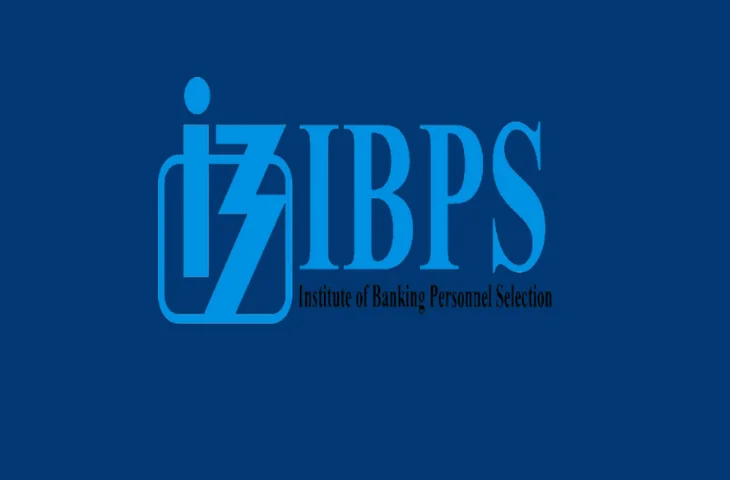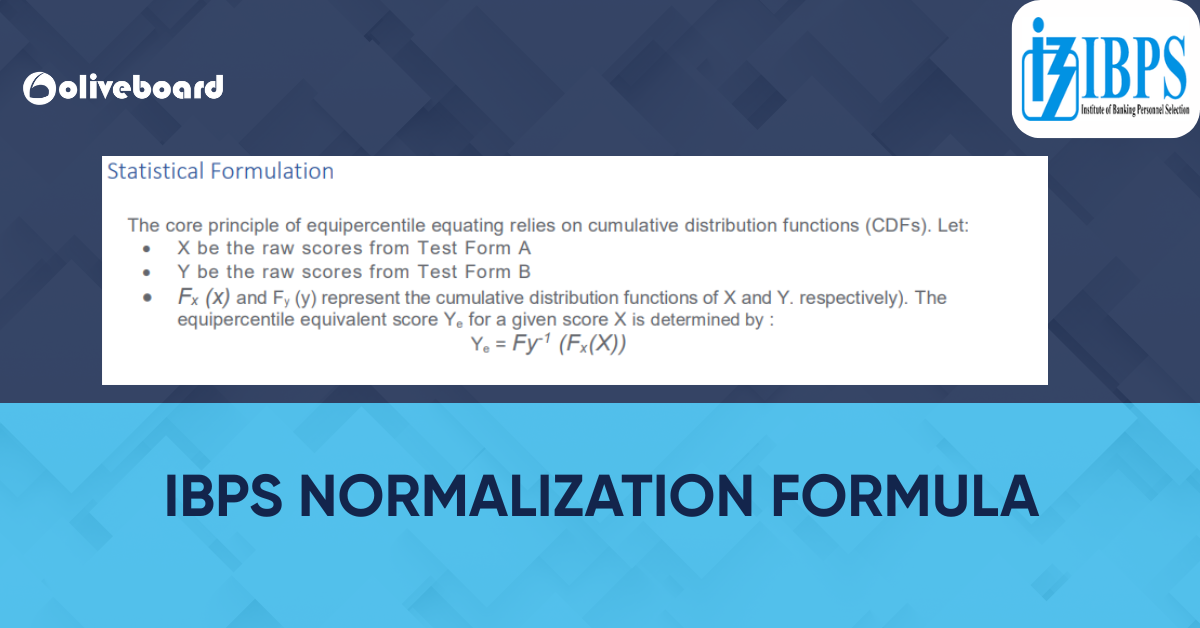The Institute of Banking Personnel Selection (IBPS) conducts many of its recruitment exams—like IBPS PO, Clerk, SO, and RRB—in multiple shifts due to the large number of candidates. However, not all exam shifts are of equal difficulty. To maintain fairness, IBPS uses a scientific method called equipercentile equating to normalize scores. In this article, we explain what the IBPS normalization process is, how it works, and the formula used to ensure that every candidate is evaluated fairly—regardless of the exam shift they appeared in.
What is the IBPS Normalization Process?
The IBPS normalization process is a statistical technique used to adjust scores across different exam sessions that may vary slightly in difficulty. This is crucial because IBPS exams are held in multiple shifts, and each shift may have a different set of questions. To ensure that candidates from different shifts are treated fairly, IBPS uses a method called equipercentile equating.
Why Is Normalization Needed?
This method ensures that a score from one shift is equivalent in merit to a score from another shift by aligning them based on percentile ranks.
- Exams are held in multiple sessions to accommodate lakhs of candidates.
- Each session may have a different level of difficulty.
- IBPS uses normalization to ensure that no candidate is unfairly advantaged or disadvantaged.
- It maintains fair competition for all applicants.
How IBPS Normalization Works: Step-by-Step?
The normalization process is technical but follows a simple logic: it compares a candidate’s score to others in the same shift and then maps that score to an equivalent score in the base session. Here’s how IBPS applies equipercentile equating:
| Step | Explanation |
| 1. Compute Score Distributions | IBPS first collects score data for each session and creates distribution graphs. |
| 2. Pre-Smooth Scores | Log-linear models are used to smooth the data and reduce random variation. |
| 3. Choose a Base Session | One session is picked as the benchmark based on its statistical reliability. |
| 4. Match Percentiles | Each score is converted into a percentile rank within its shift. |
| 5. Equate Scores | The same percentile in the base session is found, and the score is adjusted accordingly. |
| 6. Validate Results | IBPS performs checks to ensure the fairness and accuracy of the normalized scores. |
IBPS Normalization Formula (Equipercentile Equating)
The basic formula used is
Ye = Fy⁻¹(Fx(X))
Where:
- X = raw score from Test A
- Fx(X) = percentile rank of X in Test A
- Fy⁻¹ = inverse cumulative distribution function of Test B
- Ye = equated score in Test B
This ensures that the same percentile score in both tests is considered equal, regardless of the actual marks.
Example of Score Normalization in IBPS
Let’s say a candidate scores 50 marks in Test A, and that score falls in the 85th percentile. Now, IBPS finds the score in Test B that also falls in the 85th percentile, which may be 51 marks. So, even though the raw marks differ, both scores reflect the same performance level and are treated equally.
| Raw Score (Test A) | Percentile Rank | Equated Score (Test B) |
| 40 | 70th percentile | 42 |
| 50 | 85th percentile | 51 |
| 60 | 95th percentile | 59 |
Assumptions Behind the Normalization Process
IBPS normalization is based on two important assumptions:
- Population Comparability: The ability level of candidates across all shifts is similar. This is ensured by random allocation of exam sessions.
- Construct Equivalence: All question sets test the same skill sets and difficulty levels.
Why Equipercentile Equating Is the Best Method
- It is widely recognized by testing bodies globally.
- More accurate than linear methods as it adjusts for distributional differences.
- Ensures merit-based ranking, irrespective of shift difficulty.
- Reduces bias and variance in evaluation.
FAQs
Ans: Normalization is a statistical method used by IBPS to adjust scores across different shifts of the exam, ensuring fairness when the difficulty level varies between sessions.
Ans: Since the IBPS Exam is held in multiple shifts with different question sets, normalization ensures that no candidate is unfairly advantaged or disadvantaged based on the difficulty of their shift.
Ans: IBPS uses the Equipercentile Equating Method, which matches percentile scores across shifts. A candidate’s score is adjusted based on how others performed in their shift and aligned with a common base.
Ans: Yes, your raw marks may be adjusted after normalization. The final normalized score is what determines your ranking and eligibility for the next stages of the selection process.
Ans: Yes, normalization is applied to both Prelims and Mains stages of the IBPS Exams when they are conducted in multiple shifts.
- IBPS PO Mains Scorecard 2025 Out Soon, Check and Download Marksheet

- SBI SCO Salary 2025, In Hand Salary, Perks and Allowances

- SBI SCO Syllabus and Exam Pattern 2025, Post-Wise Syllabus

- SBI SCO Recruitment 2025, 996 Posts, Apply Now

- IBPS PO Personality Test 2025 Pattern, Questions, Dates

- IBPS PO Interview Marking Scheme, Panel and Other Details

Hi, I’m Tripti, a senior content writer at Oliveboard, where I manage blog content along with community engagement across platforms like Telegram and WhatsApp. With 3+ years of experience in content and SEO optimization related to banking exams, I have led content for popular exams like SSC, banking, railways, and state exams.
